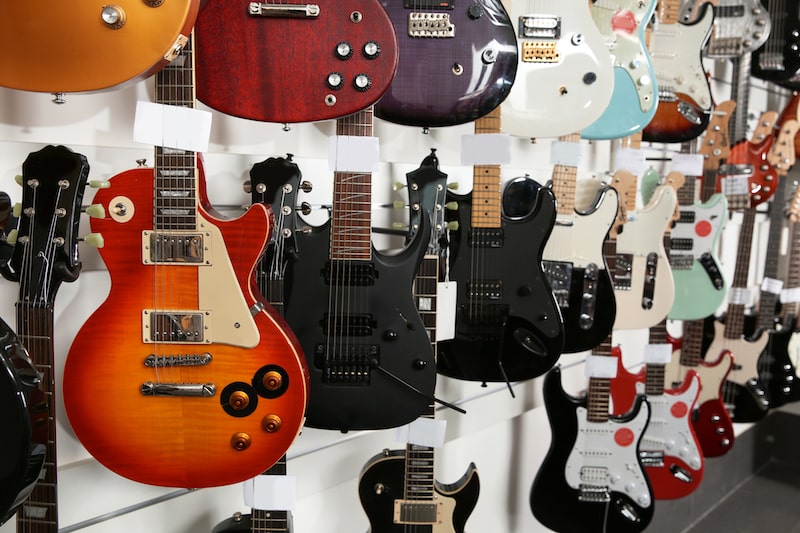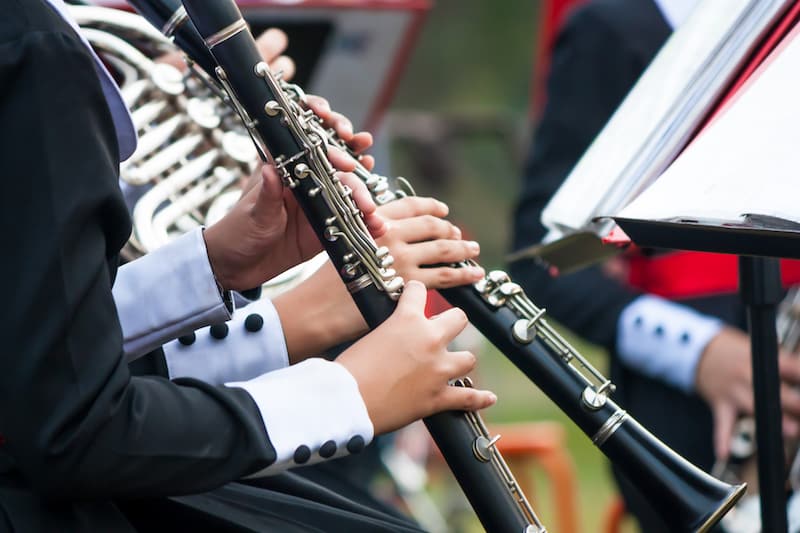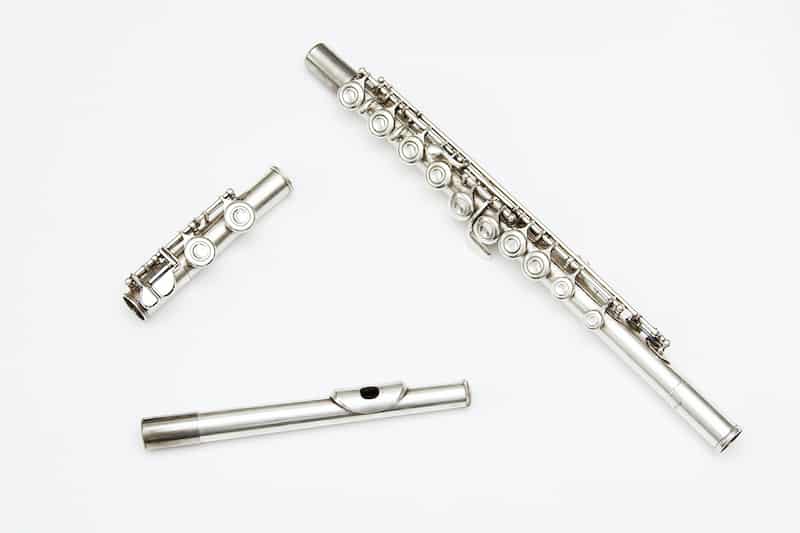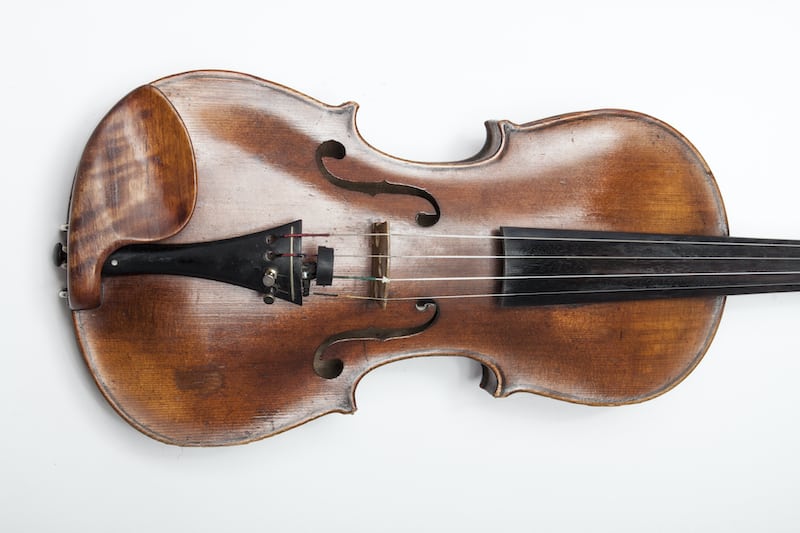After going to a loud concert, your ears may be ringing for hours. This is because the instruments being played are so loud that they actually damage parts of the ear. Luckily, your body is resilient, but loud noises can be dangerous and could cause you to go deaf.
According to experts, prolonged exposure to noises over 70 decibels can cause hearing loss, and sounds at 120 decibels can immediately damage your ears. The crazy thing is that there are several musical instruments that can get louder than 120 decibels.
Which instruments should you be cautious of standing too close to? Let’s find out.
1. Pipe Organ
When it comes to the loudest musical instrument of all time, the first on the list has to be the Pipe Organ. Pipe organs can be massive and, therefore, create deafening sounds.
The loudest pipe organ ever played was the Vox Maris, which is located in Urspringen, Germany. When tested, the organ produced sounds that were 138.4 decibels.
This is loud enough to immediately cause lasting damage to someone’s ears.
Therefore, anyone playing or listening to the Vox Maris needs to take precautions if the organ is going to be played at its loudest.
2. Electric Guitar

Although the Electric Guitar receives a little help from an amplification system, it is important to note that this instrument has been responsible for the ear damage of many concert-goers.
The loudest electric guitar ever played was at The Who’s rock show on May 31, 1976, in London. The electric guitar reached 126 decibels.
Pete Townshend, the guitarist for The Who, is now almost completely deaf due to numerous loud shows.
Again, it never hurts to wear ear protection when playing or listening to loud music.
3. Bagpipes
The Bagpipes are not just loud but can be dangerous for both the listener and the player.
In fact, there is a disease called “bagpipe lung,” which is when an infection in the lungs of the player can occur if the instrument is not cleaned properly. This is rare and can be treated, but there is also another danger to bagpipes.
When it comes to volume, however, these instruments can reach over 120 decibels. One musician even managed to make his bagpipe play at 122 decibels.
This is loud enough to cause immediate damage to the ears and hearing loss over time.
4. Trombone
The Trombone is another very loud instrument due to the length and the width of its bell, which allow this instrument to reach 114 decibels.
It is part of the brass family and creates sound through a combination of the musician buzzing their lips, the position of their mouth, and what location the slide is in.
Like many brass instruments, when played at its loudest for extended periods of time, the trombone can lead to hearing loss.
That is why if you are planning on practicing your instrument loudly, it is always good to wear a pair of earplugs.
5. Clarinet

Believe it or not, despite its relatively small size, the Clarinet is one of the loudest woodwind instruments.
The musician makes a sound by blowing into its mouthpiece with a single reed. The reed’s vibration then helps create the unique sound of the clarinet. This then funnels the air down the body to the bell, where the sound is projected out.
When played at its loudest, a clarinet can reach up to 85 – 114 decibels which is well into the danger to your hearing range.
6. Oboe
Like the clarinet, the Oboe is another type of woodwind instrument and looks very similar too. However, unlike the clarinet, the oboe is a double-reed instrument.
The oboe is the instrument you normally hear before a concert begins. The oboist will play a sustained A note, which each member of the orchestra will use to check their tuning.
If the oboist uses enough air and technique, they can get their instrument to reach between 90-112 decibels.
7. Cello

Next, we have the Cello, which is a soothing stringed instrument played with a bow in the same way as a violin.
The cello can produce very beautiful tones, but if played with a lot of strength, these instruments can make some very loud music.
If the cellist really digs into the strings, this instrument can reach up to 111 decibels. This is getting dangerously close to creating a sound that can cause immediate damage to your hearing.
The noise can also be amplified when multiple cellos are playing in unison plus, you can even get electric cellos which can raise the volume even more.
8. Timpani
The first percussion instrument on our list, the Timpani drums (also known as Kettle Drums), are often used to make a statement when played in a piece of music. This is because they can also reach 106 decibels.
Despite being drums, timpani are actually tuned to specific notes so are a type of pitched percussion instrument.
Their circumference and volume allow a musician with adequate strength and stamina to produce sounds that can be deafening.
Although the timpani will not cause immediate hearing loss, pieces of music often require them to be played at higher volumes than most instruments.
This results in many timpani players wearing earplugs while practicing or during a concert to protect their hearing.
9. French Horn

Member of the brass family, the French horn takes the decibel levels up a couple of notches.
It’s essentially a long series of pipes that the musician blows in through a mouthpiece, and the sound is then amplified and projected at the flared bell at the other end.
At its loudest, the French horn can reach between 90 and 106 decibels, one of the loudest brass instruments in an orchestra.
10. Singer
We’ve all heard of an opera singer that could break a crystal glass with a high note, but how loud can a Singer actually go?
Well, most loud singers can only reach around 70 decibels. This isn’t enough to instantly burst your eardrums, but if someone was singing that loud over a long period of time, it could cause some hearing problems.
But the loudest ever recorded singer actually reached an incredible 113.8 dB…
The volume of a singer is influenced by several factors. The larger the lungs, the more air the singer can take in, and the longer they can sustain a note.
Also, the size of the larynx and vocal cords play a role in the maximum volume a singer can reach.
11. Flute

Despite lots of the instruments on this list being quite large, size isn’t everything when it comes to sound.
The Flute, for example, is around 26 inches long, making it significantly smaller than a timpani or trombone, yet it can produce sounds that are almost as loud.
The reason for this is the high pitches that can be obtained while playing the flute. Someone with enough lung capacity and control can make the flute reach levels as high as 103 decibels.
This volume is rarely called for in a piece of music, but if you are a flutist, it may be good to use earplugs while practicing or playing loud pieces.
12. Piano
Surprisingly, the soothing sounds of a Piano can actually get pretty loud if the musician plays the notes hard enough.
To be fair, the type of piano does play a role in the decibel level that can be produced.
An upright piano will never be as loud as a grand piano, which can be over 19 feet long. The larger the piano, the more room the sound has to be amplified.
This means that a piano being played at fortissimo can start at 84 decibels and go as high as 103 decibels.
Again, this will not cause immediate hearing loss, but if played in a confined space for a long period of time, a loud piano can definitely do some real damage to your ears.
13. Violin

The smaller cousin of the cello, a Violin, is another stringed instrument normally played using a bow.
But, unlike the cello, which plays notes at a lower pitch, the violin can play a lot higher pitches of notes. It is here that the loudest sounds the violin can make are created.
When at its loudest, the violin can reach levels of between 82 and 92 decibels.
This won’t immediately cause damage to the ear, but prolonged exposure to sounds this loud could have negative consequences down the road.
Summing up our List of the Loudest Musical Instruments
Regardless of the type of instrument you play, it is never a bad idea to invest in ear protection.
It is worth it in the long run because if your hearing is damaged, you may not be able to appreciate the music you love in the future.
This is especially true if you play one of the instruments on this list!
